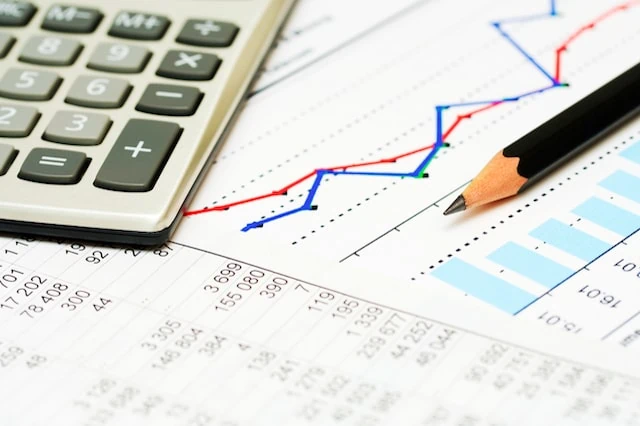Finding the best value stocks to buy involves thinking beyond the flashiest names in the stock market, and instead thinking about the substance behind those brands.
Value stocks are sometimes called “cheap stocks” not because they are only $1 or $2 per share (they’re often not), but rather because they are seen as discounted to their underlying value.
Or, as it was put much more simply by the iconic investor Howard Marks of Oaktree Capital: “It’s not what you buy; it’s what you pay for it.”
Value investing is a religion to many folks, the same way bargain hunting at flea markets or coupon clipping is to others. There’s a pride that value investors have about analyzing the true worth of a company. You sometimes need to have more interest in numbers than in flashy marketing pitches or product launches. But if this is something that appeals to you, then value investing is definitely worth considering.
In this article, I’ll teach you the basics of value stock investing, as well as provide a few of the best value stocks across different sectors that exemplify this approach, with an eye toward 2024.
Featured Financial Products
Disclaimer: This article does not constitute individualized investment advice. These securities appear for your consideration and not as investment recommendations. Act at your own discretion.
Editor’s Note: Tabular data presented in this article are up-to-date as of Nov. 12, 2024.
Table of Contents
What Is a Value Stock?

A value stock is a company that is perceived to be trading below some sort of intrinsic value. This is markedly different from many growth stocks, which typically trade at inflated market values based on investor interest or future growth potential.
Value stocks are often boring or steady names with established businesses, whereas a growth stock is likelier to be some flashy name with big ideas but no profits or tangible assets to speak of. Sure, flashy names are definitely interesting to watch. But they are simply not opportunities that most value stock investors would even consider, given their reliance on the promise of future growth rather than tangible value today.
So what’s the easiest way to separate a true value stock from overhyped pretenders? There’s no hard and fast rule, but there are a few metrics to watch. We cover each one in the following four slides.
1. Price-to-Earnings Ratio

Stock prices should be based on something. One popular way is by normalizing the price per share by earnings per share to see how “cheap” or “expensive” the stock is vs. its peers. Price-to-earning (P/E) ratio can be backward-looking (usually the past 12 months’ worth of financials), though more useful is forward P/E, which looks ahead toward estimates for the coming year. For context, the average forward P/E of the S&P 500 lately is roughly 19.
2. Price-to-Sales Ratio

Since profitability sometimes isn’t the best indicator, another point of reference worth considering is the market value of a stock when compared to its revenue. Value stocks typically trade for only about 2X their sales, while high-growth stocks can sometimes trade at price-to-sales (P/S) ratios of 10 or even 20. That’s a big risk if those sales don’t come in as expected.
3. Dividend Yield (and Payout Ratio)

Value stocks have tangible and consistent profits, so it’s natural that they also share those profits with investors. Thus, many value stocks are also dividend-paying stocks. But don’t just go chasing a high yield—some dividend stocks offer unsustainable payouts that are at risk of being cut down the road. Compare the annual dividends paid to the earnings per share to make sure the company in question isn’t overstretched; generally, paying out 70% of profits via dividends leaves enough wiggle room. But a healthy payout ratio might differ from one industry to the next.
Related: Best Target-Date Funds: Vanguard vs. Schwab vs. Fidelity
4. A Company’s Stock Price Trend

Generally speaking, value stocks are less volatile. That’s not always true, as the broader environment or unexpected headlines can upset even the most stolid blue chip. But over the long term, this is true of most value stocks.
Related: 12 Best Stocks to Buy and Hold Forever [and Ever]
Does a Low Stock Price Mean a Good Stock Value?

It’s worth noting here that there are both good value stocks, as well as “value traps” that are cheap for a reason. Think about the difference between buying a hidden gem at a flea market vs. a piece of junk that’s better off in the trash.
Related: The 7 Best Closed-End Funds (CEFs)
For instance, some stocks trade for very low price-to-earnings or price-to-sales ratio because Wall Street is expecting the actual numbers to come in much lower in the years ahead. If the experts are proven right, the stock isn’t a bargain at all. Rather, it has been discounted because it isn’t as valuable as it used to be.
Just as growth stocks can sometimes be valued based on their future operations instead of their current results, value stocks can also be valued based on their outlook—and if that outlook is grim, investors might not put much weight in current profits that are likely to vanish over the next year or two.
However, sometimes a bit of bad news results in a temporary short-term headwind, and value investors are often the first to swoop in for bargain purchases when that happens. Just be careful: It can be difficult to tell the difference between a stock that’s priced low for a reason, and a true bargain value investment.
Related: 10 Best Stock Picking Services to Find Good Stocks to Buy
How Do Value Stocks Differ From Growth Stocks?

Small biotech companies researching a potential cancer cure or tech startups developing a potential artificial intelligence (AI) gamechanger could become billion-dollar giants … or they might disappear overnight if their plans don’t pan out.
These are fundamentally “growth stocks” that are dependent on revenue and earnings growth that will justify their share price. Just think about a company like Tesla (TSLA) that debuted on Wall Street in 2010 even though it was unprofitable and had only manufactured less than 2,000 cars before going public and had a mere 4,000 additional pre-orders on the books. It was a risky bet to be sure, but now Tesla is the envy of the entire EV industry and cranks out millions of cars—and has made early investors a bundle along the way.
Related: The 7 Best Growth Stocks to Buy for 2024
Value stocks can make a bundle for investors, too, but in a very different way. They’re more likely to be companies such as traditional automakers with deep pockets and tons of hard assets like production facilities. Sure, it might be impossible for an automaker like Volkswagen to double, considering it is already the world’s No. 1 automaker with about $300 billion in revenue and nearly 9 million vehicles sold annually. But growth isn’t the appeal here … rather, the underlying value and established operations of Volkswagen is the draw.
Lastly, value stocks and growth stocks don’t always have to be opposites. From time to time, Wall Street will underestimate a high-growth firm, and as a result, you’ll have a growth stock trading at value prices.
The Top Value Picks to Buy Now

As you’re looking for the best value stocks to buy, think about the long term. Wall Street’s gyrations can sometimes mask the true value of an investment for a little while, but eventually things will reflect the reality of its balance sheet once more.
Related: 9 Monthly Dividend Stocks for Frequent, Regular Income
Or as iconic investor Warren Buffett once wrote, “In the short run, the market is a voting machine, but in the long run, it is a weighing machine.”
The following seven stocks, which are all cheaper than the broader market right now, are good examples of value stocks with real weight.
1. Johnson & Johnson

— Market capitalization: $368.6 billion
— Dividend yield: 3.2%
— Forward P/E: 14.5
— Sector: Health care
Johnson & Johnson (JNJ) is a healthcare powerhouse with tremendous staying power. It is among the 20 largest U.S. corporations by market capitalization, has been in operations for nearly 140 years, and is one of just two companies with a tip-top credit rating of AAA—tech titan Microsoft (MSFT) is the other. It also has an amazing track record of dividend growth, increasing its payouts for each of the last 60-plus years.
Related: The 9 Best Dividend Stocks for Beginners
Massive scale, rich history, amazing creditworthiness, and consistent income potential … those are definitely boxes that value investors like to check. And Johnson & Johnson has them all.
JNJ is perhaps best-known for its consumer health division, which includes Tylenol and Band-Aid products. Ironically enough, the company just spun off this division into the publicly traded Kenvue (KVUE), though it still holds a 9.5% stake.
The remaining Johnson & Johnson produces medical devices, prescription drugs, and vaccines. That makes it a diversified health care operator—and considering the consistency of healthcare spending along with demographic tailwinds lifting long-term demand for the sector, JNJ stock is in great shape for the years ahead.
Related: 13 Best Stock & Investment Newsletters for Inbox Alpha
There’s admittedly a bit of a dark cloud hanging over JNJ stock as a result of ongoing litigation concerning its now-discontinued baby powder. But this uncertainty has resulted in soft share prices, which might provide a long-term buying opportunity for value-oriented investors who are more interested in measuring JNJ stock over the next several years vs. the next few months.
Related: 11 Best Stock Screeners & Stock Scanners
2. JPMorgan Chase

— Market capitalization: $675.5 billion
— Dividend yield: 2.1%
— Forward P/E: 14.3
— Sector: Financials
Another company with deep roots, the beginnings of JPMorgan Chase (JPM) can be traced back even farther than J&J to 1799.
This is not to say the best days of JPM are behind it, however.
Related: 10 Best Dividend Stocks to Buy [Steady Eddies]
You can chalk up JPMorgan’s longevity to its organic growth and shrewd management, but also aggressive deal-making that has helped it tighten its grip over the years. Consider that during the worst of the financial crisis, it purchased both Bear Stearns and Washington Mutual at fire sale prices. More recently, in 2023 it snapped up regional bank First Republic. You have to have a rock-solid balance sheet to absorb troubled operations like these during challenging times—but JPMorgan has come out even stronger for moves like these.
As one of the 20 largest U.S. corporations by market value, JPMorgan is a dominant force on Wall Street—and one of the most respected financial institutions in the world.
Related: The 7 Best Fidelity Index Funds for Beginners
As the icing on the cake, income-oriented investors should also consider the stock’s dividend history. While peers Bank of America (BAC) and Citigroup (C) were gutted by the financial crisis, JPM not only held tough but quickly surpassed prior highs in both share price and quarterly dividend payouts. Consider that in 2008 it was paying $1.52 annually, and by the end of 2014 it had paid $1.56 per share. Now, it pays $5.00 per share annually as of 2024. Consistency over those very volatile years are a great sign that this value stock is worth owning, no matter what the future holds.
Related: 15 Best Stock Research & Analysis Apps, Tools and Sites
3. Phillips 66

— Market capitalization: $52.8 billion
— Dividend yield: 3.6%
— Forward P/E: 12.3
— Sector: Energy
Energy stocks can be volatile based on day-to-day pricing of crude or gas. But Phillips 66 (PSX) is primarily a “midstream” natural gas transportation firm and oil refinery, meaning its main source of revenue is taking in crude oil and turning it into other usable petrochemical products including gasoline for cars. That offers consistency, with a wide moat and at a scale that is difficult for other businesses to match.
Related: 9 Best Stocks Trading Under $30 Per Share
Spun out of ConocoPhillips in 2012, Phillips 66 has become even more focused and entrenched after moving away from the production-focused business of its prior parent. While oil explorers have been having a good run in the last year or two thanks to rising crude prices, that shouldn’t overshadow value stocks in the energy sector like PSX that deliver less flashy but more reliable results over the long term.
Related: 5 Best Vanguard Dividend Funds [Low-Cost Income]
It’s also worth noting that Phillips 66’s first dividend as an independent firm back in 2012 was 20 cents per share; PSX now pays almost six times more that at $1.15 quarterly. This generous history is something value investors might also be drawn to.
Phillips 66 has largely moved alongside the broader stock market in the last year, but longer term it is challenging prior all-time highs set back in 2018. That kind of sustained uptrend is proof that this is not just your typical oil stock banking on inflationary pressures, but rather a company with staying power.
Featured Financial Products
4. Sempra Energy

— Market capitalization: $58.3 billion
— Dividend yield: 2.7%
— Forward P/E: 17.9
— Sector: Utilities
Sempra Energy (SRE) is a large-cap utility stock that boasts traditional electricity and natural gas utility services, as well as an energy infrastructure arm.
Related: The 7 Best Dividend ETFs [Get Income + Diversify]
Sempra provides electric and natural gas to 25 million consumers in Southern and Central California via its regulated utility subsidiaries, SDG&E and SoCalGas. It also provides regulated electric transmission and distribution to 13 million Texans via Oncor Electric Delivery Company. And its Sempra Infrastructure division includes more than 4,500 miles of natural gas transportation and distribution pipelines, as well as U.S.-Mexico cross-border solar, wind, and battery storage projects.
“SRE has solid utility operations and has benefited from a favorable regulatory environment, above-average authorized ROEs, and strong population demographics,” says Argus Research analyst Marie Ferguson (Buy). “Sempra has a strong electric utility base in Southern California and Texas. These utilities are some of the largest by customer count in the U.S., and serve regions with strong demographics.”
Related: The 9 Best ETFs for Beginners
Utilities are one of the most stable investments out there given that they’re effectively legalized regional monopolies, with a capital-intensive operation that prevents competition and highly regulated structures that make disruption to their underlying model all but impossible. There’s not a ton of growth, to be sure, but value investors are drawn to this rock-solid reliability. Specifically, in the case of SRE, shares trade at 17.9 times earnings estimates, which is not only below the S&P 500, but the utility sector average.
Investors also should find the income potential appealing, as the regular monthly utility checks from customers help fuel consistent dividends back to shareholders. Furthermore, in the case of SRE, it only needs a little more than half of its profits to pay its dividend, making it not just sustainable for the foreseeable future, but giving it plenty of room for growth.
Related: 5 Best Money Market Funds [Protect Your Savings]
5. Sysco

— Market capitalization: $38.4 billion
— Dividend yield: 2.6%
— Forward P/E: 17.0
— Sector: Consumer staples
Though not as recognizable as the brands you find in the grocery store aisles, Sysco (SYY) is indirectly a mainstay of most consumer budgets in the U.S. That’s because it is one of the largest foodservice companies in the U.S., serving eateries of all shapes and sizes. Sysco provides everything from meat and products to kitchen appliances and utensils.
Related: 9 Best Real Estate Crowdfunding Sites + Platforms
This gives SYY the enviable position of being at the center of the restaurant business with a measure of diversification that investors can’t find by buying stock in the eateries themselves. This allows it to tap into opportunities faster and sidestep disruptions with more agility. As proof, consider Sysco snapped back much more quickly than other stocks that were hit harder by COVID-19 restrictions. In fact, in roughly a year, SYY stock had raced back to prior highs by spring 2021 thanks to its massive and efficient distribution network.
Related: 11 Best Alternative Investments [Options to Consider]
It’s also worth noting that Sysco has provided 55 years of consecutive dividend growth (making it a Dividend King), crossing plenty of bad times for U.S. consumers along the way. This is proof of a long-term commitment to shareholders and a strong balance sheet that can weather any short-term troubles in the stock market.
6. FedEx

— Market capitalization: $70.2 billion
— Dividend yield: 1.9%
— Forward P/E: 14.0
— Sector: Industrials
FedEx (FDX) is one of the largest parcel service companies in the world, offering express transportation, ground delivery, freight transport, and other services to more than 220 countries and territories.
Related: 5 Best Vanguard Dividend Funds [Low-Cost Income]
Parcel companies like FedEx and rival United Parcel Service (UPS) have for decades played a vital role in both domestic and international commerce, but that role has only accelerated with the proliferation of online shopping. Of course, the most noteworthy online retailer—Amazon.com (AMZN)—evolved from one of FedEx’s major customers into one of its fiercest rivals by developing its own network of transportation vehicles. Still, there has been plenty of business to go around; FedEx’s revenues have improved in eight of the past 10 years, roughly doubling in that time.
Related: Best Vanguard Retirement Funds for an IRA
Just be careful: FedEx and its ilk can be batted around by any number of headwinds, including economic volatility, changes in fuel costs, even political unrest in countries where it does business. It can be quite sensitive to U.S. economic strength; slowdowns for consumers and businesses alike mean fewer reasons to put FedEx to work.
For now, though, the economy remains robust, and FDX shares look decently priced. They currently trade at a forward P/E of just under 14.
Related: Best Vanguard Retirement Funds for a 401(k) Plan
“We think that FDX shares offer value, particularly as management gets back on track with its five-year plan,” says Argus analyst John Eade, who rates the stock at Buy. “In recent months, the company has undergone a management transition and appears to be placing greater emphasis on shareholder returns—with help from an activist investor (D.E. Shaw).
“The balance sheet remains solid, and the new management team recently signaled confidence in its outlook with a 10% dividend hike and an expanded share repurchase program.”
7. MetLife

— Market capitalization: $57.0 billion
— Dividend yield: 2.7%
— Forward P/E: 8.4
— Sector: Financials
Metlife (MET) is a large financial services provider with a wide array of offerings: insurance (including life, dental, group disability, even pet), annuities, employee benefits, and asset management services.
Related: The 9 Best Dividend Stocks for Beginners
Insurance isn’t the most scintillating business on earth, and their stocks often move in fits and starts. Indeed, MET shares delivered single-digit losses in 2023 while the broader market soared. But MetLife is one of the best and largest names in the space, offering a healthy, well-covered dividend, solid financials, and market-beating long-term performance.
Related: The 9 Best ETFs for Beginners
“We have a positive view of the company’s business diversification, expansion through both [mergers and acquisitions] and organic growth, and commitment to shareholder returns,” says Argus Research analyst Kevin Heal, who rates the shares at Buy. And he’s not alone—the stock has 12 Buys currently, versus just two Holds and one Sell.
Part of the allure right now is a stellar value proposition. MET shares trade at a mere 8.4 times 2024 estimates for earnings, which analysts believe will jump by 18% year-over-year. Also flashing “cheap” is a price/earnings-to-growth (PEG) ratio of just 0.1. (With PEG, any number lower than 1.0 is considered undervalued, while any number above 1.0 is overvalued. For perspective, the S&P 500 trades at a PEG of 1.2 currently.)
Related: Best Fidelity Retirement Funds for a 401(k) Plan
Featured Financial Products
Should I Buy Value Stocks or a Value Exchange-Traded Fund?

Exchange-traded funds, or ETFs, provide a diversified way to play the stock market in one single holding. And perhaps unsurprisingly, there are a host of ETFs that seek to provide groups of value stocks in one place.
Related: The 7 Best Vanguard ETFs for 2024 [Build a Low-Cost Portfolio]
Diversification is definitely something to consider, but also keep in mind that it’s difficult to apply the same screening methodology on an ETF that you do on individual stocks. So if you care about popping the hood and looking around for yourself, investing in individual stocks might be preferable—even if it’s a bit more work.
How Much of the Stock Market Is Made Up of Value Stocks?

It’s hard to say for certain. For example, there are many value-oriented ETFs out there, and some have hundreds more holdings than their peers. But generally speaking, Wall Street can be thought of in thirds—one-third true “growth” stocks, one-third true “value” stocks, and another third that is in the blended area between the two.
What Kind of Brokers Handle Value Stocks?

The good news is, virtually any traditional broker is going to allow you to buy value stocks. As long as equities are on the table—and that’s the case with virtually all online brokers—you’ll be able to buy any style of stock: growth, value, dividend, you name it.
You can check out our favorite investment apps for a full list of options.
Related: 6 Best Stock Recommendation Services [Stock Picking + Tips]

Stock recommendation services are popular shortcuts that help millions of investors make educated decisions without having to spend hours of time doing research. But just like, say, a driving shortcut, the quality of stock recommendations can vary widely—and who you’re willing to listen to largely boils down to track record and trust.
The natural question, then, is “Which services are worth a shot?” We explore some of the best (and best-known) stock recommendation services.
Related: 12 Best Long-Term Stocks to Buy and Hold Forever

As even novice investors probably know, funds—whether they’re mutual funds or exchange-traded funds (ETFs)—are the simplest and easiest ways to invest in the stock market. But the best long-term stocks also offer many investors a way to stay “invested” intellectually—by following companies they believe in. They also provide investors with the potential for outperformance.
So if you’re looking for a starting point for your own portfolio, look no further. Check out our list of the best long-term stocks for buy-and-hold investors.
Related: 9 Best Monthly Dividend Stocks for Frequent, Regular Income

The vast majority of American dividend stocks pay regular, reliable payouts—and they do so at a more frequent clip (quarterly) than dividend stocks in most other countries (typically every six months or year).
Still, if you’ve ever thought to yourself, “it’d sure be nice to collect these dividends more often,” you don’t have to look far. While they’re not terribly common, American exchanges boast dozens of monthly dividend stocks.
Please Don’t Forget to Like, Follow and Comment

Did you find this article helpful? We’d love to hear your thoughts! Leave a comment with the box on the left-hand side of the screen and share your thoughts.
Also, do you want to stay up-to-date on our latest content?
1. Follow us by clicking the [+ Follow] button above,
2. Subscribe to The Weekend Tea, our weekly newsletter to read more about investing, spending, taxes, and more, and
3. Give the article a Thumbs Up on the top-left side of the screen.
4. And lastly, if you think this information would benefit your friends and family, don’t hesitate to share it with them!





